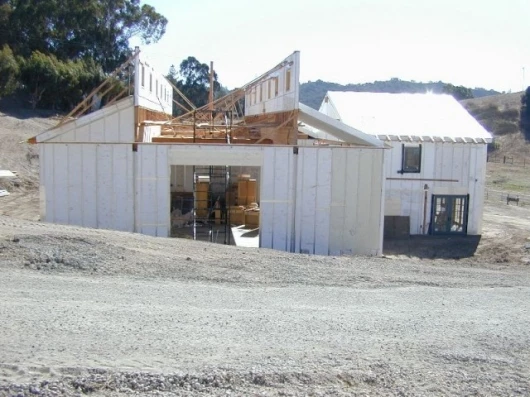February 16, 2009 When we think green house emissions, fume spewing factories and highways choked with gas guzzling vehicles are usually the first images that spring to mind, but it may surprise some readers to learn that buildings represent a sizeable chunk of our collective carbon footprint. In America, it's estimated that buildings contribute to 36% of energy consumption and 30% of green house gas emissions and it's an area that's ripe for improvement. Innovative American building company Vitruvian is doing just that by offering a full service green building system that utilizes pre-engineered modular construction consisting of inter lockable panels to form a complete, weather tight building shell. As well as delivering extremely low energy bills, Vitruvian has calculated that if its process was used for all building replacement and construction in America between now and the year 2030, its environmental impact would be the equivalent of removing more than 80 million cars from the road.
Green building with EPS
The essence of the green building is creating structures that are more efficient in their consumption of energy and water and less wasteful in their use of materials than conventional buildings. Vitruvian have achieved this in a number of ways. The modular roof and wall panels are made from Expanded Polystyrene (EPS) and light gauge steel. EPS is light weight (98% air and 2% polystyrene by volume) and highly energy efficient, requiring much less energy to produce than traditional building materials. The savings in heating and cooling alone, more than compensates for its production. Typically for every kilogram of oil used in its manufacture, about 200kg will be saved in reduced heating over the life of the building. The inter-lockable panels can easily be assembled and disassembled and due to their inert nature and longevity can be reused over and over again, without the need to find their way into landfill. The light weight panels and other building materials also reduce transport cost over traditional construction materials, adding to the minimization of greenhouse gases.
Smart software
Vitruvian’s proprietary software will build the shell in 3D once the design has been completed. Every component is labeled and cutting lists are produced for all elements of the structure and finish. Vitruvian claim that this will result in an overall waste of less than 1%, or 1/10 of that of traditional construction methods. The interlocking panel systems ensure installation is quick and easy, reducing construction costs. The result is an overall efficiency that will cut up to 20% off the costs of traditional construction whilst providing a clean, green, healthy and safe environment. Clever use of the software in the design stage will also enable identification of any problems upfront, eliminating them from the costly building phase. The software ensures that 3D structure and any associated data can be readily updated in seconds if design alterations are required.
More benefits
Other benefits to the EPS panel construction include low flammability properties compared to timber construction. The panels have excellent load and span capabilities and are durable and long lasting. The EPS component of the panel helps achieve green building ratings as its insulation qualities do not deteriorate over time. EPS won’t impact on inside air quality and it also prevents noise transmission resulting in a quieter building. It is also 100% recyclable and insect resistant as it provides no nutritional value to ants and the like. In addition, the panel building system reduces air leakage for improved thermal efficiency. The panels will not absorb water, do not contain CFC’s or HCFC’s, nor do they emit poisonous gases. (see EPS Molders Association).
Overall the Vitruvian system provides a cost effective, sustainable and environmentally friendly building solution for seamless transition into the Green Age. We need to ask ourselves why we continue with the traditional and often archaic building systems and products commonly used today? When will we start to take greater responsibility for our planet and demand that we and our authorities require building construction and products along the lines of the Vitruvian way?
David Grieg
Via: Vitruvian.



















